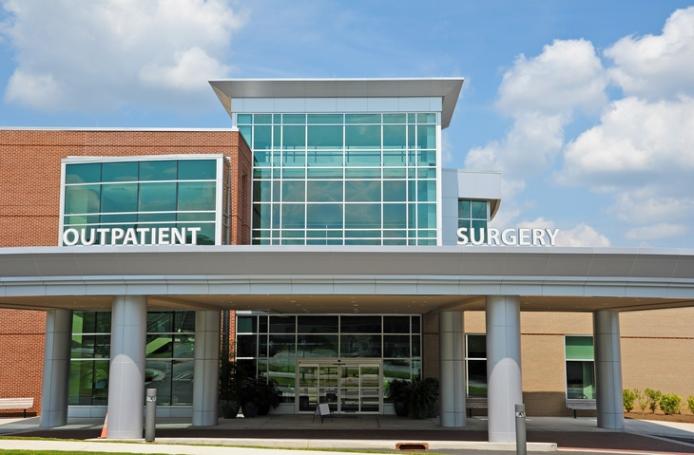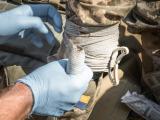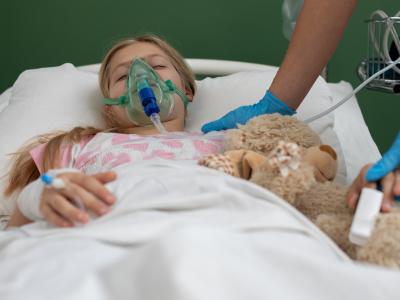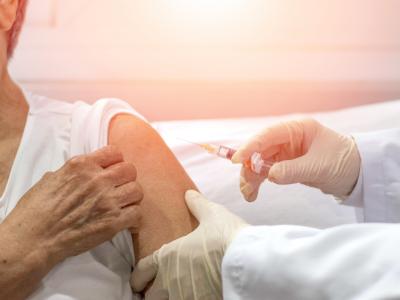Small community hospitals constitute a significant portion of the US healthcare system. In 2015, nearly three quarters of US hospitals had fewer than 200 beds. Every day, in rural and urban areas across the country, these facilities play a critical role in caring for millions of Americans.
And while data are limited on antibiotic use in these facilities, recent studies suggest that antibiotic usage in small community hospitals is not much different than it is at larger facilities. In addition, rates of drug-resistance appear to be similar as well. In short, overuse of antibiotics and emerging resistance is just as much an issue at small community hospitals as it is at large academic medical centers.
These are some of the reasons why the Joint Commission, the body that accredits nearly 21,000 US healthcare organizations, and the Centers for Medicare and Medicaid Services are now requiring that small community hospitals, like their larger counterparts, have antibiotic stewardship programs (ASPs) in place to promote judicious use of antibiotics and slow the spread of drug-resistant organisms.
But if antibiotic stewardship is just as important at small community hospitals, it's also more difficult to implement. In a 2015 survey, fewer than half of the hospitals with fewer than 200 beds met all of the Centers for Disease Control and Prevention's (CDC's) seven core elements of antibiotic stewardship, and only 31% of critical access hospitals (rural hospitals with fewer than 25 beds) had an ASP that met all the core elements.
It boils down to a lack of resources, according to a new paper in Clinical Infectious Diseases.
Lack of ID, stewardship expertise
As the review explains, one of the significant stewardship barriers facing small community hospitals is that they often lack infectious disease (ID) physicians and pharmacists, considered a critical part of any ASP. Although guidelines from the Infectious Diseases Society of America and the Society for Healthcare Epidemiology of America recommend ASPs be led by ID physicians with advanced stewardship training, previous surveys of small hospitals have found that only slightly more than half even have access to ID specialists.
While this makes developing and maintaining stewardship program harder, it's not impossible, the study's lead author, Edward Stenehjem, MD, MSc, told CIDRAP News. "We've seen examples across the country of small critical access hospitals that have no ID support that develop strong robust, stewardship programs," Stenehjem said. "So I think you can do it, but it definitely takes dedicated time and resources to be able to feel comfortable with guiding diagnosis and therapy in these patients."
Stenehjem is an infectious disease expert at Intermountain Medical Center in Utah, part of Intermountain Healthcare, a not-for-profit health system that includes 16 small community hospitals. Intermountain is one of four community hospital systems reviewed in the paper, along with Kaiser Permanente Southern California, Colorado Hospital Association, and Hospital Corporation of America.
At Intermountain Healthcare, one of the solutions to the lack of in-house ID expertise has been to develop an ID and antibiotic stewardship "telehealth" program, in which an ID physician and ID pharmacist at the system's central hospital in Salt Lake City provide data, mentorship, and consultation remotely via a toll-free call line.
Stenehjem believes this model, just one example of how hospitals can share or pool ID resources, could be replicable, especially for small hospitals that are part of a larger network of hospitals. "We feel that the model we're developing and showcasing could very well be generalizable to other hospitals and systems," he said.
"The telehealth example…is very innovative, and really takes this model of collaboration and resource pooling for stewardship to the next level and makes it a lot more accessible and feasible," said David Hyun, MD, a co-author of the study and a senior officer with the Pew Charitable Trusts' antibiotic resistance project.
But not all small community hospitals are part of larger health networks. For those hospitals, the review recommends using commercial telehealth support, and taking advantage of antibiotic stewardship training and assistance being offered by state health departments and hospital associations.
Limited staff, limited time
There are other challenges for small hospitals trying to establish ASPs. Measuring antibiotic usage and identifying areas in which antibiotic prescribing needs improvement, for example, requires a degree of expertise and information technology infrastructure that many small hospitals lack—especially if they aren't part of a larger network.
In addition, while starting an ASP at a small hospital may not necessarily require hiring additional staff, it does require carving out time for physicians, pharmacists, and nurses to focus on stewardship activities, in a way that doesn't make them feel like they're being overburdened.
"You don't have an excess amount of staffing in small hospitals; you're limited in many case to one full-time pharmacist, a handful of physicians, and mid-levels," Stenehjem said. The question is, "Can the administration designate time…and provide people with resources to get them educated on stewardship?"
One answer suggested by Stenehjem and his co-authors is to integrate an ASP into already existing hospital committees, like pharmacy and therapeutics or infection control. Embedding stewardship duties into ongoing efforts to improve quality, Stenehjem suggests, can avoid the sense that hospital administrators are just adding more responsibilities onto staff members' plates.
Hyun and Stenehjem believe all the barriers listed are equally important. "They all share a common theme, because it essentially comes down to resource limitation," Hyun said, and limited ID and stewardship expertise, limited staff time, and limited data analysis capacity all affect a small hospital's ability to develop and maintain a stewardship program.
Involving other stakeholders
But Hyun is hopeful that this paper, which emerged from the experiences shared at a meeting Pew and the CDC held with representatives of small hospitals, is just the first step in a more concerted effort to come up with ways to help small hospitals implement stewardship programs.
"There are a lot of different stakeholders who can play a role in helping hospital systems, or individual small hospitals, to achieve stewardship programs," Hyun said. These stakeholders include hospital associations, state and regional health agencies, and medical organizations. Hyun said Pew and the CDC recently met with the American Hospital Association to focus specifically on ways to implement stewardship programs in critical access hospitals.
Stenehjem is hopeful, too, that getting the ID community and other stakeholders involved will help small hospitals overcome the stewardship challenges they face. But he acknowledges that it will be an uphill climb.
"I think we're getting traction, we're getting movement, but it certainly will take a while," he said. "There are lots of small hospitals that need to develop these programs and maintain them."
See also:
May 2 Clin Infect Dis article






















